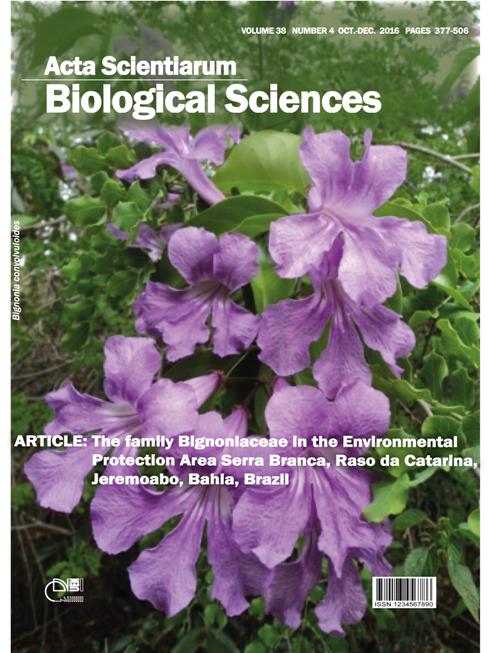<b>The population structure of <i>Lonchocarpus cultratus</i> in an Atlantic Forest riparian zone of the upper Paraná River, Brazil
Abstract
The goal of this study was to evaluate the population structure of Lonchocarpus cultratus located in a riparian zone in the flood plain of the upper Paraná River. Data were collected on the stem diameter at breast height (DBH) and the plant height from two phytosociological inventories, which were performed with a 14-year interval, using data collected in studies conducted in 1992 and 2006 in an Atlantic Forest riparian zone remnant of Paraná State, Brazil. Class intervals for DBH and plant height were defined using the Spiegel equation, and the measured values were distributed between the different distinct classes. The distribution of individuals between the different DBH classes was analyzed using de Liocourt’s quotient (q). For both stages of the study, the DBH distribution resulted in an inverted-J curve, as expected for uneven-aged forests. The distribution of the height values was irregular, as expected for an early succession species. The de Liocourt q indicated an unbalanced distribution for both stages. However, there was a tendency towards balance in the second stage. The results imply that the studied population was maturing and maintaining its self-regenerating capacity while tending towards balance and presenting behavior characteristic of early succession species.
Downloads
DECLARATION OF ORIGINALITY AND COPYRIGHTS
I Declare that current article is original and has not been submitted for publication, in part or in whole, to any other national or international journal.
The copyrights belong exclusively to the authors. Published content is licensed under Creative Commons Attribution 4.0 (CC BY 4.0) guidelines, which allows sharing (copy and distribution of the material in any medium or format) and adaptation (remix, transform, and build upon the material) for any purpose, even commercially, under the terms of attribution.
Read this link for further information on how to use CC BY 4.0 properly.












1.png)




3.png)













